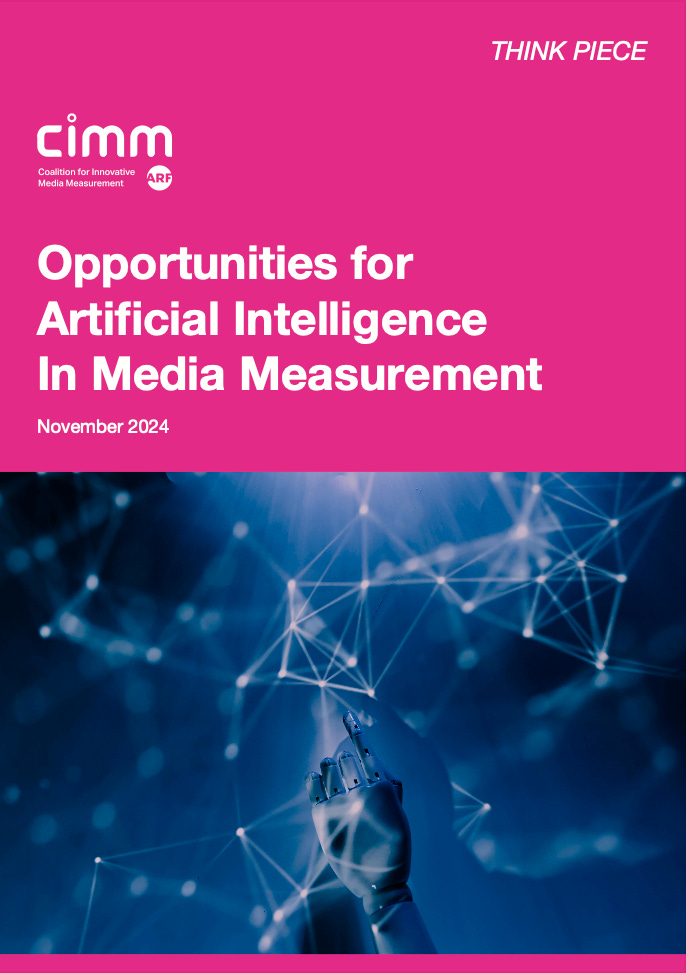My White Paper for CIMM on Opportunities for AI in Media Measurement
Or everything you wanted to know about AI and ML but were afraid to ask
This week marks the release of my white paper for CIMM on “Opportunities for AI in Media Measurement,” aimed at demystifying artificial intelligence and machine learning for media and advertising professionals. Whether you’re deeply involved in media measurement or looking to catch up on the industry’s latest AI developments, this paper is designed to inform, guide, and prepare you for the rapid shifts AI is bringing to our field.
What’s Inside: AI Fundamentals and Implementation Advice
In this white paper, I hope readers will find an accessible introduction to AI and ML technologies tailored explicitly for media measurement. It’s a practical, jargon-free guide that provides a lay of the land on AI basics, from neural networks to generative AI models. CIMM aims to empower media professionals with a clear understanding of what AI can achieve in today’s landscape and what challenges to anticipate.
I’ve tried to outline best practices for integrating AI into media measurement processes. This includes concrete advice for choosing suitable models, managing data quality, and ethically deploying AI tools. For those wondering how AI will directly impact the media ecosystem, the white paper doesn’t shy away from bold predictions, offering a roadmap for organizations ready to embrace AI while addressing concerns about data privacy and AI bias.
Key Predictions: The Next Wave of AI-Driven Transformations
1. Automated, Personalized Reporting for Clients
One of the most impactful changes will come in reporting automation. Imagine a world where each client report is uniquely crafted to address specific brand concerns and provide actionable insights without requiring extensive manual intervention. With AI-powered language models, personalized reports for every client can be generated rapidly, allowing research teams to focus on high-value tasks like strategic planning rather than repetitive report generation.
2. Increased Granularity through Synthetic Data
Multilevel Regression and Post-stratification (MrP) techniques, coupled with synthetic data generation, promise to add a new layer of detail to media measurement while maintaining privacy. Synthetic data, created from patterns in existing data without linking back to individuals, offers a way to enrich sample data without compromising privacy. This opens new doors for measuring fragmented audiences across multiple platforms, making national projection and demographic insights more accurate than ever.
3. AI-Generated Metadata: Disruption on the Horizon
AI’s capability to generate detailed metadata on content and ads could disrupt companies whose core services revolve around manual metadata creation. The potential here is massive, with generative AI able to produce real-time metadata for every new ad variant, scene, and product placement. This automation will allow measurement providers to keep pace with the exponential growth in digital content, adding agility and scale to metadata handling, all while challenging traditional business models in the metadata industry.
I want to extend my thanks to everyone who contributed to this project. Your insights and input have been invaluable in shaping this resource. Special thanks to CIMM for the support and collaboration in bringing this project to fruition.
The white paper is now available for download on the CIMM website. Whether you’re well-versed in AI or just starting to explore its potential, this resource is designed to equip you with the knowledge to navigate the evolving media measurement landscape confidently.



